Did you know that traditional clothing reflects diverse cultures across the world, each telling its own unique story? From vibrant saris in India to intricate kente cloth in Ghana, these garments act as living museums, preserving centuries of history, beliefs, and craftsmanship in every thread.
By understanding the significance behind traditional clothing, we gain a deeper appreciation for cultural diversity and the heritage of communities worldwide, a valuable perspective in today’s interconnected world. That’s why we’ve created this guide at Remitly to highlight iconic traditional garments from across the globe.
Read on to discover the cultural stories behind them and see how these timeless designs continue to inspire modern fashion.
The stories our clothes tell: Why traditional clothing matters
Traditional clothing is more than fabric—it’s a story you can wear. Around the world, garments serve as markers of cultural identity, carrying history and value in every stitch. During weddings, ceremonies, and religious events, clothing signals social status, community ties, and important life milestones.
Colors, patterns, and materials often tell their own stories. In Japan, kimono designs often reveal seasons, family lineage, virtues, marital status, and even gender through specific symbols and colors. In Ghana, vibrant kente uses bold designs to represent wealth, courage, and wisdom, turning every garment into a living message of identity.
By preserving these garments, communities keep their legacy alive, allowing future generations to connect with their roots and their culture in an increasingly globalized world.
Asia: Elegance in every thread
Many Asian ethnic garments are living artwork that carry history, culture, and symbolism.
The Japanese kimono: Art you can wear
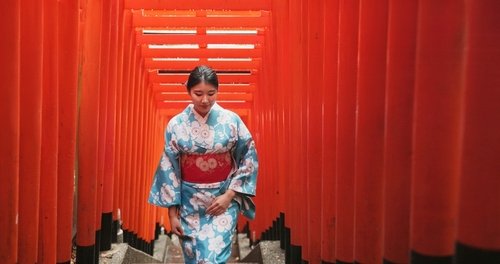
Kimonos are traditional Japanese garments with wide sleeves, worn wrapped at the front and secured with a sash called an obi. They’re designed to reflect the seasons and occasions. Cherry blossom designs celebrate spring, while cranes symbolize longevity and good fortune.
Everyday kimono wearing has declined in modern Japan, and today, people rarely wear it outside formal events. However, this cultural dress is experiencing a revival for festivals, weddings, ceremonies, and other cultural events, blending century-old craftsmanship with contemporary fashion trends.
Wearing a kimono today not only honors Japanese heritage but also connects people to the symbolism and artistry embedded in every stitch.
India’s sari: 5,000 years of grace
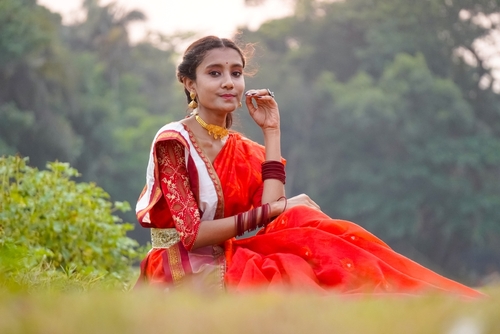
Saris are traditional unstitched garments, made up of a long piece of cloth draped around the waist and shoulder. They showcase regional draping styles, each reflecting a community’s legacy and identity. Banarasi saris from Varanasi feature intricate brocade with gold and silver threads. They create floral and paisley designs that can take weeks to complete.
Kanchipuram saris from Tamil Nadu are prized for rich silk and contrasting zari borders, crafted with precision for a lustrous, durable finish.
Beyond artistry, each traditional sari carries deep meaning, reflecting social customs, religious ceremonies, and life milestones. For example, white saris are traditionally worn by widows, while red saris are symbols of love and luck, usually worn at weddings.
Africa: Vibrant heritage in motion
West African clothing bursts with color and meaning, reflecting centuries of tradition.
West African kente: Royal threads of Ghana
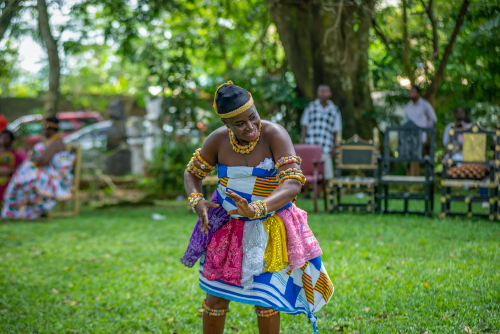
Kente is a traditional hand-woven fabric made from narrow strips of silk, cotton, or rayon, sewn together to create vibrant, geometrically patterned cloth. It has deep roots in Ashanti royalty, symbolizing power, spiritual beliefs, and social status. Each color carries specific meaning:
- Gold: royalty, wealth, high status, glory, and spiritual purity
- Silver: serenity, purity, and joy
- Black: maturation and intensified spiritual energy
- White: Purification, sanctification rites, and festive occasions
- Green: vegetation, planting, harvesting, and growth
- Blue: peacefulness, harmony, and love
- Grey: healing and cleansing rituals
- Red: political and spiritual moods, sacrificial rites and death
- Pink: femininity and life essence
- Purple: femininity, usually worn by women
- Maroon: healing
While kente is admired globally, it’s important to wear it respectfully. Kente is also cherished as gifts, symbolizing respect, honor, and connection.
The Dashiki: From tradition to global symbol

Dashikis are loose-fitting, bright colored clothing that serves as a designation of African heritage. Originally worn for ceremonial purposes in West Africa, the Dashiki evolved into a pan-African symbol celebrated worldwide. It gained prominence in the United States during the Civil Rights and Black Power Movements of the 1960s and 1970s. During these periods, it served as a bold expression of African pride, resistance to western norms, and a reclaiming of culture.
Today, it remains a powerful statement of identity and pride. The Dashiki continues to resonate, worn in both traditional settings and modern fashion as a symbol of connection to African roots and a celebration of cultural unity.
Europe: Tradition meets regional pride
Europe’s traditional clothing reflects centuries of regional heritage, history, pride, and social identity:
Scottish Highland dress: More than plaid
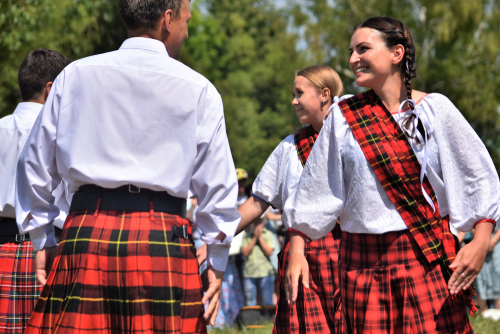
Traditional attire from the Scottish Highlands has a rich history, with tartan patterns representing specific clans and family heritage. For example, the MacGregor tartan is unique to that clan.
Beyond the kilt, traditional dress includes sporrans (leather fur pouches for formal events). They also include belts, jackets, and even ceremonial weapons such as dirks and sgian-dubhs, all showing status and character.
A common misconception is that Highland dress was everyday clothing for Scots. In reality, it was traditionally reserved for formal occasions and ceremonies, such as weddings, clan gatherings, or Highland games.
Another myth is that all tartans were ancient. In truth, only some are centuries old, while many were created in the 19th century during the Victorian revival of Scottish culture. Today, highland dress is often seen at cultural events and celebrations, keeping these traditions alive while reminding people of its historical and ceremonial roots.
Scandinavian folk costumes: Nordic heritage preserved
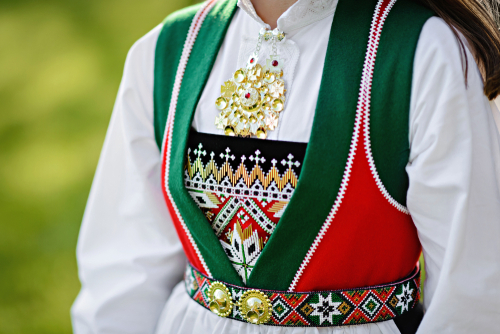
Bunads are traditional folk costumes found in Norway and across Scandinavia. They serve as symbols of local and regional identity and pride. Each region has its own embroidery, colors, and patterns that reflect local history and generational traditions.
The Hardanger bunad from western Norway is known for its striking embroidery, often paired with a red bodice and silver accessories. The Telemark bunad stands out with bright colors, floral designs, and ornate belts. From stitching techniques to jewelry, every detail showcases the identity of a community and keeps Nordic legacy alive.
Bunads and other Scandinavian folk costumes remain central to cultural life today. They’re worn on national holidays like Constitution Day, weddings, Christmas, New Year’s, and other ceremonies, preserving textile heritage that has lasted for centuries.
The Americas: Indigenous wisdom in fabric
From North America to Central and South America, traditional Indigenous clothing carries centuries of cultural knowledge and spiritual meaning.
Peruvian textiles: Andes mountains to modern markets
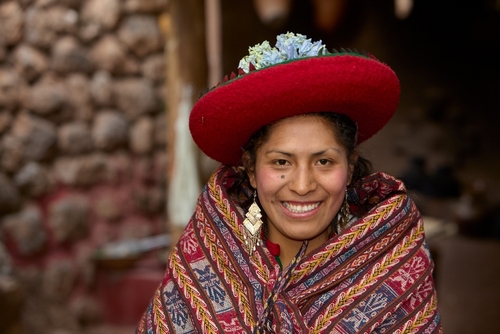
In Peru, weaving is a centuries-old tradition passed down through generations. Artisans work with alpaca and vicuña wool, valued for its softness, warmth, and durability to create intricate patterns that tell stories of community, history, and the natural world. Techniques like backstrap weaving and detailed geometric designs highlight both skill and patience.
These heritage textiles carry deep cultural meaning. Colors and designs often reflect local myths, seasonal cycles, and connections to nature, from mountains and rivers to native animals. Ceremonial use at festivals and rituals reinforce the symbolic power of each design.
Today, trade fair initiatives and cooperatives support artisans by providing sustainable income and preserving Peru’s rich textile heritage.
Native American regalia: Sacred dress and cultural expression
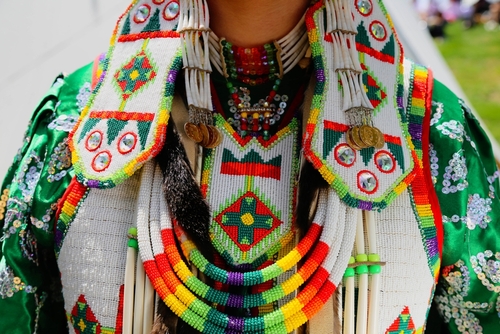
Native American regalia is ceremonial attire worn at powwows, dances, and cultural rituals. It is also honored as a living symbol of cultural heritage by Native Americans in the US.
Each piece is carefully crafted, often passed down through generations. Plains tribes may wear feathered headdresses and beaded breastplates, while Pueblo communities in the Southwest create woven sashes, pottery-inspired designs, and turquoise-adorned garments.
Regional styles highlight North America’s cultural diversity. In the Great Lakes, women often wear ribbon skirts with intricate beadwork, while in the Pacific Northwest, ceremonial blankets and cedar bark adornments are common.
Every feather, bead, color, and pattern tells a story about ancestry, achievements, or spiritual beliefs.
Modern impact: Traditional clothing today
Traditional clothing around the world continues to shape modern fashion, with designers incorporating heritage fabrics, weaving techniques, and iconic shapes into contemporary collections.
From kimono-inspired jackets to kente-patterned accessories, these garments add storytelling and cultural depth to runway and ready-to-wear designs.
Efforts to preserve these textile traditions are supported by organizations like UNESCO, which safeguard intangible cultural legacy and help communities maintain handcrafting skills for future generations.
At the same time, fashion needs to balance cultural appreciation with respectful collaboration, acknowledgement of origins, and proper credit to celebrate heritage rather than exploitation.
Cultural appropriation happens when clothing or sacred symbols are taken out of context and used as a trend, which can feel disrespectful or harmful. Cultural appreciation, on the other hand, includes learning the meaning of a garment, honoring its origins, and supporting the communities who make it.
Celebrating our shared heritage through fabric
Clothing is a universal way humans express identity, values, and legacy. By learning about traditional garments around the world, we gain insight into diverse cultures and build bridges of understanding and respect.
Both exploring your own heritage and appreciating other traditions foster connection and awareness in an increasingly globalized world.
FAQs
What is the difference between traditional clothing and cultural appropriation?
Traditional clothing reflects a culture’s history, identity, and ceremonies. Cultural appropriation is using these garments without respect, context, or permission—sometimes even as fashion statements. Respectful use involves learning the garment’s origins, using it appropriately, understanding its meaning, and giving credit to the culture that created it.
How can I learn more about my own clothing cultural traditions?
Research your family history and regional heritage. Visit cultural centers, museums, or local organizations. Talk to elders, artisans, or community members to learn about the stories and symbolism behind your traditional clothing.
Why is it important to preserve traditional clothing customs?
Traditional clothing keeps cultural identity and history alive. It supports artisans and local economies. Preserving these practices also educates others, promoting respect for cultural diversity.
How does traditional clothing influence sustainable fashion today?
Many traditional garments are made from natural fibers, hand-weaving techniques, and long-lasting construction methods. Modern designers often draw inspiration from these practices to create sustainable, ethically produced clothing.